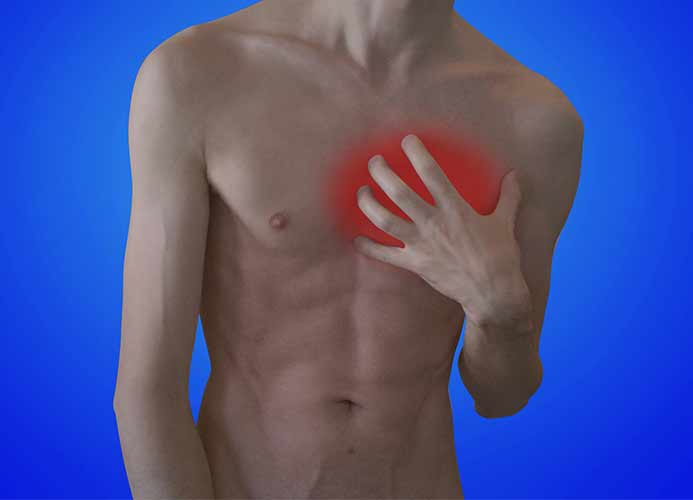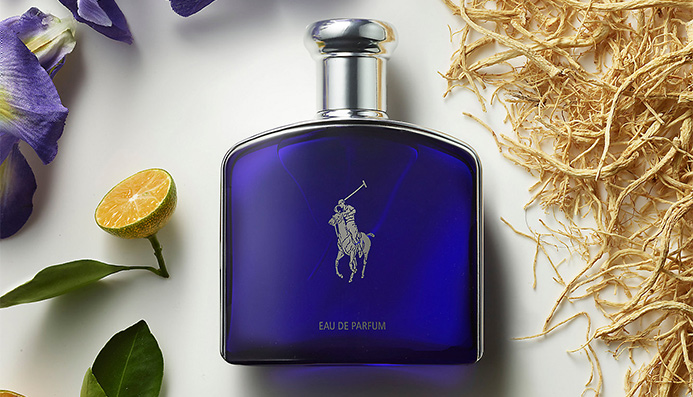How To Tell If Chest Pain Is Muscular? Building a strong and bigger chest is a goal for every man. But the process comes with a hefty price – aches, and pains. Well, we know that these are ” Good Pain”— and this discomfort, pain, suffering will help us achieve our goal.
However, we can not simply ignore pain, especially chest pain. According to a survey, in the United States, Chest pain causes more than 8 million Emergency Room [ER] visits every year. So, if a person feeling chest pain, he should take proper precautions. The first step is to determine whether the Chest Pain Is Muscular or there are any other heart-related health issues. In this article, we will discuss, the type of chest pain a person experiences if the pain is muscular, how to fully treat the chest pain if it is muscular, and how to detect heart-related chest pains.
How To Tell If Chest Pain Is Muscular
Every person who performs chest exercise, will or already have experienced Muscular chest pain. It is well known among bodybuilders, that slight pain is part of a successful training program. To boost muscle strength, the muscle should experience stress, tension, and fatigue in the full course of physical activity. In the Bodybuilding society, it is represented as “Good Pain”. So, if you are experiencing muscular chest pain, you are enhancing your strength, endurance and getting one step close to achieving your fitness goal. Without further ado, lest check out how to recognize if your Chest Pain Is Muscular or not.
24 – 48 hours after a workout
Chest pain that started 24 – 48 hours after a workout is known as Delayed-onset muscle soreness (DOMS). This pain is caused due to tiny, microscopic tears in the muscle fibers during an exercise. To repair the muscle fiber, the human body increases inflammation [chemicals from your body’s white blood cells enter your blood or tissues to protect your body] which ultimately leads to Delayed-onset muscle soreness (DOMS). During this period, the human body’s blood flow increases to the area of injury or infection.
According to the American College of Sports Medicine, DOMS lasts up to three days after your workout. It can be last up to 4-5 days if the body doesn’t have enough nutrients. So, if your chest started after 24-36 hours after a chest workout, it is muscular.
The reason you can experience DOMS after 3-4 days, is because of the late muscle recovery time of your body. The length of recovery time is directly dependent on the diet— how much nutrients you are feeding to your body, during your training regime.
To get rid of DOMS quickly, a low-intensity workout session will be a wise option. This exercise will increase the blood flow to the muscles and help repair, muscle tissues, improve flexibility and mobility.”
Related: How to Tell if Your Glutes are Growing?
During or After Chest Exercise
If you have experienced chest pain during a chest exercise, lactic acid can be one of the reasons. The pain can be a burning feeling in your chest area, cramps, nausea, weakness, and feeling exhausted.
If you ever feel this during an exercise, it means your body is building lactic acid.
The reason behind the acid buildup is when the body is doing extreme workout training, the body is converting oxygen to glucose for fueling up. However, due to lack of oxygen, the lactate/ lactic acid substance is produced, to fill up the need for glucose. This result in an increase of lactic acid in the bloodstream
Related: Band Hip Thrust Exercises For you to perfrom
Chest Pain On Whole Chest
Costochondritis can be one of the health conditions that is causing chest pain. Despite, a health condition, this is caused due to intense chest workouts.
Costochondritis is inflammation of the cartilage in the rib cage or the area where the upper ribs are joined with the cartilage that holds them to your breastbone. These areas are called costochondral junctions.
This condition is often considered harmless and is self-treatable.
These are some symptoms that occur during costochondritis:
- Chest pain increased when lying down.
- The pain is too strong when you put pressure on the chest, like when you wear a seatbelt
- Coughing or deep breath makes chest pain strong
- Chest pain during chest exercise or any other physical activity
Although this is a health condition, it mainly occurs after intense workout sessions or lifting heavyweights. According to research, costochondritis occurs more often in women, especially those who are athletes.
If the pain is mild it is self-treatable but if the pain is severe and going on for weeks you should medical treatment.
If you are suffering from Costochondritis, the pain will stop after a week or 2 weeks. During this time, it’s best to avoid any physical activity and take enough rest.
Related: What Happens When a Male is Sexually Excited
Sharp Pain On A Pointed Location
Precordial catch syndrome is chest pain that mainly occurs when nerves in the front of the chest are squeezed or aggravated. This is not a serious health condition and doesn’t cause any harm.
If you feel a slight sharp pain, that lasts only a few minutes at most, that is a precordial syndrome.
A person can experience, sharp, pointed, stabbing pain, at a specific single point. Most people, feel the pain is below the left nipple.
This is not a medical condition, it is because of the irritation of the nerves in the lining of the lung, also known as the pleura. There are no other symptoms or complications, that can be severe to the health. This problem mainly occurs after an intense chests session, where the muscle is in the relaxing and recovery phase, and a slight twitch causes chest pain.
Related: How to Tell Someone they Smell
Sudden Chest Pain For a short Duration
Tietze syndrome is a unique musculoskeletal disease that occurs when there is swelling between the cartilage, around the joints, and connecting your upper ribs.
There is no official report, on what causes this health issue, but according to some doctors, it is mainly after a strain from exercise or strenuous physical activity.
There is no fixed duration of this chest pain, and the chest pain can be gone forever, or come after years.
However, the pain lasted only for a few seconds.
Tietze syndrome affects only a small portion of the chest and is not a big health issue. However, some people confuse this as a heart attack, but during a heart attack, the pain covers the whole chest, and the person will be short of breath, nauseous, and sweating.
If you have Tietze syndrome, the chest pain will extend to your neck, arms, and shoulders.
Related: How Often To Train Calves
Can I continue exercising with muscular chest pain?
Yes, it is normal to exercise with muscular chest pain, although you’ll be facing a lot of difficulty during exercise. During the warmup, and after performing a few sets of exercises, the pain which was the result of muscle soreness, started to disintegrate. If you are doing an intense workout, you can still experience muscular chest pain, as the muscle tissue is not fully repaired.
By activating chest muscles during exercise, you are raising your body temperature and increasing blood flow to your muscles. This increase helps you get relief from muscular chest pain, and also lessen the risk of injury during exercise.
On the other hand, if you find it difficult to exercise, due to pain while stretching, or loss of muscle strength, it’s better to allow the affected muscle groups time to recover.
Related: Average Leg Press Weight For Males
Will I keep getting muscular chest pain?
Yes, you can experience muscular chest pain after every time you workout. It doesn’t matter if you are a beginner or an experienced bodybuilder, both can feel muscular chest pain.
Muscular chest pain is not a health condition but a muscle condition that only occurs due to the change in the structure of the muscle, and the process of adaptation of muscle to a certain activity.
In simple words, when muscle structure is changed (such as lifting weights, running, or any other physical activity), the muscle tissue is torn, stretched, which causes muscle soreness, or pain.
However, by performing the same physical activity at a similar intensity, the body muscles are adapted to the activity, and you will suffer less tissue damage and less pain.
Related: Average Calves Size For Males
Who can Muscular Chest Pain affect?
Anyone who trains their chest muscles, including bodybuilders who spend 10-15 years training the muscle, will be affected by muscular chest pain.
For beginners, it is very hard as their body muscles are not adaptable to a certain physical activity, with a fixed movement. Some people quit in the early stage due to this pain, but in the bodybuilding society, it is represented as ” Good Pain”. It is the first step every athlete has to go through to achieve their fitness goal.
However, the pain starts to disappear, when your body is adapted to a certain physical activity. This pain follows the athlete to a great path, of building great strength, boosting stamina, endurance, and achieving an amazing body physique.
Can you prevent muscular chest pain?
Yes, you can prevent muscular chest pain to a certain extent. However, it is impossible to fully prevent it.
- To prevent this pain, you can choose a low-intensity workout instead of high intensity, as this will allow less muscle stress and a low risk of torn tissues.
- Perform a proper warmup, and activate all your chest muscles. This will increase the blood flow and reduce the risk of injury.
- Always gives proper recovery time to the muscles. This will definitely prevent muscle pain after or during exercise. However, if you do an intense workout session, you can still experience chest pain.
- Avoiding tobacco, smoke, and alcohol can cause severe chest pain.
- If you suffer from high blood pressure or asthma, it’s better to seek a doctor even if there is a small amount of chest pain. This is to avoid further health problems.
- Avoid physical activities that increase the risk of physical injuries, such as lifting extremely heavyweights.
How can I treat muscular chest pain?
Muscular chest pain can not be treated in an instant, as the pain is due to the tearing of muscle tissue, which requires a certain amount of time to heal properly. Although there are certain medications that can ease the pain, this medication will not help in helping the muscles.
These are some tips, that can ease the muscle cheat pain:
- rest
- ice packs
- massage
- Light stretching ( if possible)
Although, muscular chest pain doesn’t require a special visit to a doctor if the chest is pain is too strong, or there is a sharp pain on a single point, its best to seek medical advice.










